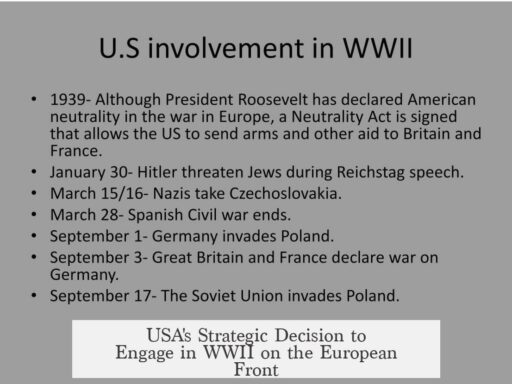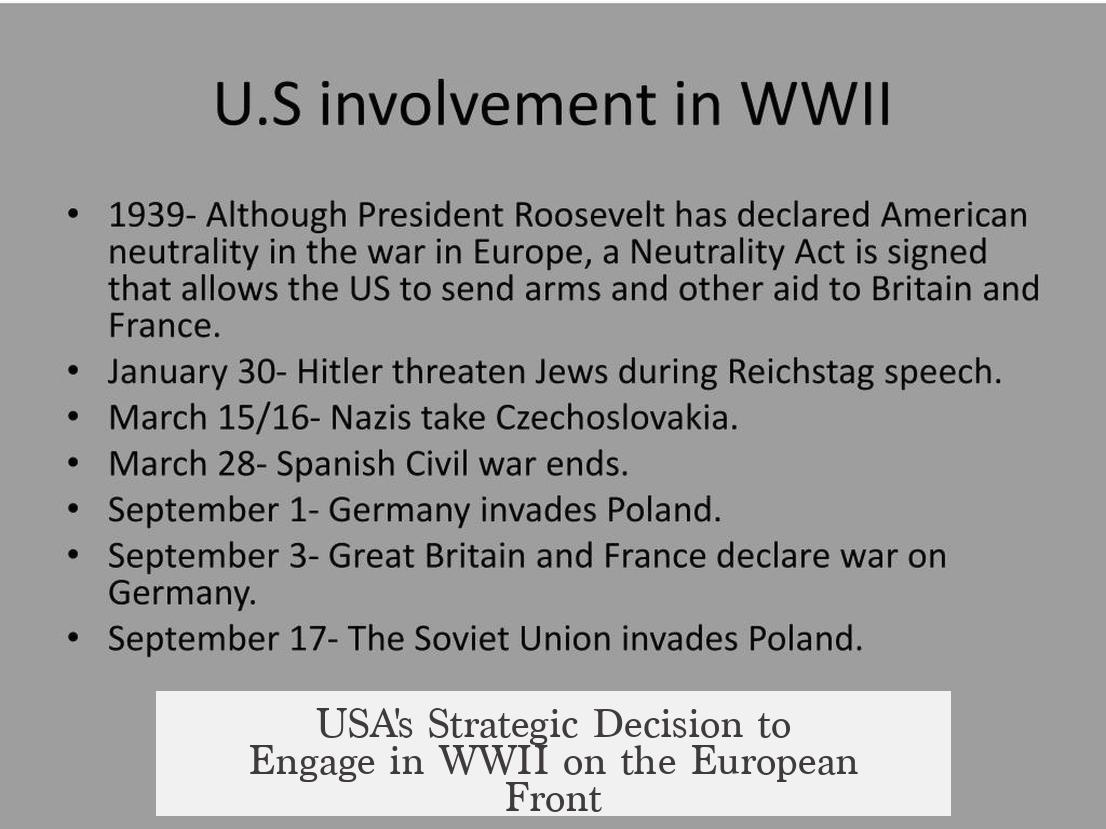The United States fought actively on the European front in World War II alongside the Pacific because of the “Europe First” strategy, geopolitical considerations, and the necessity to defeat Nazi Germany as the primary threat to global security.
Before entering the war, U.S. leaders coordinated with Allied powers, mainly the United Kingdom, to formulate a grand strategy. They identified Germany as the paramount danger since its potential victory over the Soviet Union would allow the Axis to consolidate Europe as an impregnable stronghold. The fall of both the UK and the USSR posed a catastrophic scenario that could jeopardize future Allied operations globally.
This recognition led to the “Europe First” policy. The United States pledged to prioritize defeating Germany before shifting full effort to Japan. Military planners reasoned that they could contain the Japanese advances temporarily while focusing on dismantling the larger and more dangerous Nazi threat. This coordinated strategy was reaffirmed after the attack on Pearl Harbor when British Prime Minister Winston Churchill met President Franklin D. Roosevelt at the Arcadia Conference in Washington, D.C.
Despite the Japanese attack on Pearl Harbor on December 7, 1941, which directly targeted U.S. Pacific forces, the U.S.-UK alliance reaffirmed the Europe First approach. Japan’s strike compelled America to enter the war, but it did not change the strategic priority of defeating Germany. When Germany and Italy declared war on the United States four days after Pearl Harbor, the U.S. was obligated to respond on multiple fronts.
Internally, there was debate and opposition to the Europe First policy, especially from leaders responsible for the Pacific theater. Figures like Admiral Ernest King and General Douglas MacArthur advocated for increased allocation of resources toward fighting Japan due to the immediate threat it posed. Additionally, American public opinion leaned heavily toward focusing on Japan, given its surprise attack and the emotional impact on the nation.
Nevertheless, practical military realities in the early war years required the U.S. to allocate significant resources to both theaters. Initially, the Pacific theater received substantial attention to check Japanese advances and begin counterattacks. However, sustained political and military leadership commitments ensured that defeating Germany remained the top priority. Over time, as the Pacific front stabilized, U.S. forces intensified their European campaigns, culminating in the large-scale landings and battles across Western Europe.
The United States also viewed the European front as decisive for the post-war order. American leaders sought to prevent total Soviet dominance in Europe after Germany’s defeat. This goal required a significant U.S. ground presence in continental Europe to influence the reconstruction and geopolitical balance, which further motivated active involvement on the European front.
Before direct involvement, the U.S. had already supported the Allies through measures like the Lend-Lease program and convoy escort duties, stepping out of isolationism gradually. Roosevelt’s administration recognized that aggression by Germany, Italy, and Japan threatened global stability and U.S. interests even before Pearl Harbor, pushing the country toward eventual full engagement.
In summary, the United States’ active fight on the European front alongside the Pacific involved:
- Strategic necessity: Germany was the bigger threat; defeating it first was crucial.
- Allied coordination: The “Europe First” policy emerged from joint planning with the UK and other Allies.
- Military pragmatism: Containing Japan while focusing on Germany was feasible.
- Political and diplomatic commitments: The U.S. reaffirmed its priorities at Arcadia and subsequent conferences.
- Post-war considerations: U.S. interests included limiting Soviet influence in Europe.
- Gradual U.S. engagement: Prior support to Allies set the stage for direct involvement.
| Key Factor | Explanation |
|---|---|
| Europe First Policy | Prioritizing the defeat of Nazi Germany to prevent it from dominating Europe and threatening global balance. |
| Pearl Harbor Attack | Forced U.S. into war but did not shift the primary focus from Europe. |
| Allied Agreements | Collaboration with UK and USSR shaped strategy and resources deployment. |
| Military Resource Allocation | Initial focus on Pacific containment while mobilizing forces for Europe. |
| Post-war Influence | Ensuring U.S. role in Europe’s political and economic reconstruction. |
Fighting on both fronts demanded the largest military buildup in U.S. history. The necessity of engaging two major Axis powers simultaneously shaped every strategic decision. American industry, civilians, and military personnel contributed to this global effort. The dual front ensured the Axis was pressured from multiple directions, accelerating its defeat.
The European campaign included major operations like the North African campaign, the Italian campaign, and the pivotal D-Day invasion, culminating in the defeat of Nazi Germany in 1945. Meanwhile, sustained efforts in the Pacific gradually rolled back Japanese gains until their ultimate surrender. The U.S. commitment to fighting in Europe alongside the Pacific was vital to the Allied victory and shaped the post-war world order.
- The U.S. fought on the European front due to Allied strategy prioritizing Germany as the main threat.
- Coordinated plans allowed temporary containment of Japan while focusing on Europe first.
- Pearl Harbor triggered U.S. entry but did not change the strategic priority of defeating Germany.
- Political, military, and post-war considerations reinforced the European focus.
- Active involvement in Europe was essential for global security and post-war influence.




